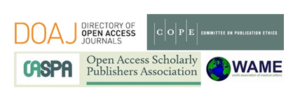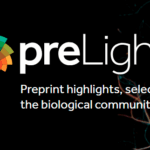By Lilian Nassi-Calò
Open access is being asserted as the preferred form of publication of research results, especially those publicly funded. Many studies have shown that it is economically sustainable, and that the resources used in subscription journals would be more than enough to finance this business model. Moreover, the perception of quality of open access publications is improving among the scholarly community.
Smear campaigns about Open Access, however, have also become more frequent in recent years. The major responsible for the unfounded attribution of low quality and lack of peer review of this publication model are predatory publishers and journals. The term has become popular since John Bohannon’s paper in Science in 20131,2, where the author sought to tarnish Open Access’s image in general by the fact that 157 of 304 open access journals have published very low quality computer-generated fraudulent articles. Predatory journals or pseudo-journals are those which claim to be scientific open access publications, but exist solely to collect article processing charges (APC). Besides Bohannon’s article, there is the predatory journal list published – and systematically updated – by Jeffrey Beall3. This librarian at the University of Colorado (Denver, CO, USA) became well known also for calling SciELO a “publication favela”, in contrast to for-profit commercial publishers – the “good neighborhood”. As expected, the Brazilian and international scientific community, reacted proportionately, such as SPARC, which stated that SciELO is considered “a model for the rest of the world”4.
The most comprehensive index of open access journals is the Directory of Open Access Journals (DOAJ), created in 2003 by the Open Society Institute and the Lund University in the city of the same name in Sweden. Earlier this year the index included over 11,000 scientific journals. Like open access, DOAJ has been criticized for allegedly include predatory journals. This led DOAJ to make more stringent the criteria for inclusion of new journals and to demand, about two years ago, that all indexed journals should resubmit their inclusion in the directory. This process resulted in the failure of 3,300 titles to resubmit their indexing applications, and they should be permanently excluded. The news on the restructuring of DOAJ was published in Nature in its May 9, 2016 edition5.
Lars Bjørnshauge, DOAJ’s managing director, said he is “absolutely sure that the majority of the journals that did not reapply are not publications with poor ethics, but rather, journals that are unfamiliar with providing the information required for reapplication”.
Currently, DOAJ has 8,848 journals. This number includes journals resubmitted to DOAJ that have not yet been analyzed in light of the new criteria in force since March 2014, those who resubmitted and were approved, and new journals submitted under the new criteria that were approved.
A characteristics of predatory journals is to use titles that seem to indicate being published in leading scientific research countries as the US, Canada, Australia, New Zealand, European countries and others, when in fact they are mostly based in Africa, Pakistan, China and India. Latin America, by having mainly nonprofit open access journals linked to research institutions and scientific societies, has less than 0.5% of predatory publishers and only 2% of Latin American authors publish in such journals. The SciELO Program is certainly responsible for the good reputation of the majority of the journals in the region.
Predatory journals remain Beall’s favorite subject, who expressed he does not believe that DOAJ’s measure will produce reliable outcomes. In his opinion, information regarding journals submitting to DOAJ is the publishers’ responsibility and would be, therefore, questionable. Beall, however, should know that any submission process to reputable bibliographic databases such as Web of Science, Scopus, or Medline relies on information provided by the journal editor or publisher. It is the committees’ call to assess the veracity of the information, and value the journal’s integrity. DOAJ certainly does the same.
Bjørnshauge agrees that there are publishers that provide false information, however DOAJ supports educational campaigns on behalf of scientific publication’s integrity and it is supported by at least “a dozen ambassadors” that assess and report on questionable publishers. He claims to assess each postulant journal direct and effectively, and that “most scholars can figure out whether a journal is an appropriate outlet with 10-15 minutes work”. He claims to receive about 80 submissions per week and in the last two years, DOAJ rejected more than 5,400 journals, but not all of them are predatory publications. Many publishers are unaware of copyright and permissions rules, or editorial transparency, which make their journals to be rejected.
Importantly, DOAJ, in a joint initiative with the Committee of Publication Ethics (COPE), the Open Access Scholarly Publishers Association (OASPA) and the World Association of Medical Editors (WAME) published in 2013 a set of standards known as “Transparency Principles and Best Practices in Scientific Publication”6. These organizations are dedicated to establishing scientific publishing standards and identify ethics and transparency principles that distinguish legitimate from not legitimate journals, often fraudulent. According to those rules, the criteria primarily derived from those developed by DOAJ upon its inception in 2003. Participating organizations aim to disseminate these standards among their members, in order stimulate more publishers to follow ethics principles and good practices in scholarly communication.
The principles include 16 topics, including peer review, editorial board, copyright, guidelines to deal with scientific misconduct, conflict of interest, revenue sources, advertising, and many others, covering almost all aspects of scientific publication.
As a work in progress, as stated by the “Principles”, OASPA has just published on May 13, 20167 a reviewed version of their membership criteria. This organization created in 2008 represents a broad spectrum of open access publishers and other organizations, and reports that it is continuously reviewing and improving the inclusion criteria in order to conform a community able to discuss and explore open access business models, tools and standards.
Besides the aforementioned organizations working to promote good practices in open access publishing, there are crowdsourcing initiatives such as Journalysis.org and Quality Open Market Access (QOAM) that rely on volunteer researchers to assess journals and share their experiences about publishing in a particular journal. They assign four categories of concepts about publications, including “threat to authors.” Bjørnshauge, from DOAJ, supports this initiative and claims that it is productive to rely on disinterested authors to rate journals’ integrity. Beall certainly disapproves.
Notes
1. NASSI-CALÒ, L. Controversial Article in The Journal “Science” exposes the weaknesses of Peer-Review in a set of Open Access Journals. SciELO in Perspective. [viewed 15 May 2016]. Available from: http://blog.scielo.org/en/2013/11/05/controversial-article-in-the-journal-science-exposes-the-weaknesses-of-peer-review-in-a-set-of-open-access-journals/
2. BOHANNON, J. Who’s Afraid of Peer Review? Science. 2013, vol. 342, nº 6154, pp. 60-65. DOI: 10.1126/science.342.6154.60
3. VELTEROP, J. The fenced-off ‘nice’ publication neighbourhoods of Jeffrey Beall. SciELO in Perspective. [viewed 15 May 2016]. Available from: http://blog.scielo.org/en/2015/08/01/the-fenced-off-nice-publication-neighbourhoods-of-jeffrey-beall/
4. ALPERIN, J.P., et al. Open Access in Latin America: a paragon for the rest of the world [Originally published in the SPARC blog]. SciELO in Perspective. [viewed 15 May 2016]. Available from: http://blog.scielo.org/en/2015/08/18/open-access-in-latin-america-a-paragon-for-the-rest-of-the-world-originally-published-in-the-sparc-blog/
5. BAKER, M. Open-access index delists thousands of journals. Nature. 2016. DOI: 10.1038/nature.2016.19871
6. Principles of Transparency and Best Practice in Scholarly Publishing. Open Access Scholarly Publishers Association (OASPA). 2013. Available from: http://oaspa.org/principles-of-transparency-and-best-practice-in-scholarly-publishing/
7. Reviewing OASPA Membership Applications: OASPA’s Continued Commitment to Best Practices in Open Access Publishing. Open Access Scholarly Publishers Association (OASPA). 2016. Available from: http://oaspa.org/reviewing-oaspa-membership-applications/
References
ALPERIN, J.P., et al. Open Access in Latin America: a paragon for the rest of the world [Originally published in the SPARC blog]. SciELO in Perspective. [viewed 15 May 2016]. Available from: http://blog.scielo.org/en/2015/08/18/open-access-in-latin-america-a-paragon-for-the-rest-of-the-world-originally-published-in-the-sparc-blog/
BAKER, M. Open-access index delists thousands of journals. Nature. 2016. DOI: 10.1038/nature.2016.19871
BEALL, J. Jeffrey Beall’s list of predatory publishers. Scholarly Open Access. 2015. Available from: http://scholarlyoa.com/publishers/
BOHANNON, J. Who’s Afraid of Peer Review? Science. 2013, vol. 342, nº 6154, pp. 60-65. DOI: 10.1126/science.342.6154.60
COP, N. Can monies spent globally on journal subscriptions be completely transitioned to an OA business model to free the journals?. SciELO in Perspective. [viewed 15 May 2016]. Available from: http://blog.scielo.org/en/2015/05/26/can-monies-spent-globally-on-journal-subscriptions-be-completely-transitioned-to-an-oa-business-model-to-free-the-journals/
NASSI-CALÒ, L. Controversial Article in The Journal “Science” exposes the weaknesses of Peer-Review in a set of Open Access Journals. SciELO in Perspective. [viewed 15 May 2016]. Available from: http://blog.scielo.org/en/2013/11/05/controversial-article-in-the-journal-science-exposes-the-weaknesses-of-peer-review-in-a-set-of-open-access-journals/
NASSI-CALÒ, L. Open access as a sustainable alternative to scholarly communication. SciELO in Perspective. [viewed 15 May 2016]. Available from: http://blog.scielo.org/en/2016/01/14/open-access-as-a-sustainable-alternative-to-scholarly-communication/
NASSI-CALÒ, L. Open Access in Latin America free of predatory journals. SciELO in Perspective. [viewed 15 May 2016]. Available from: http://blog.scielo.org/en/2015/11/13/predatory-journals-the-dark-side-of-open-access/
NASSI-CALÒ, L. The favourable perception of open access increases among researchers. SciELO in Perspective. [viewed 15 May 2016]. Available from: http://blog.scielo.org/en/2015/09/17/the-favourable-perception-of-open-access-increases-among-researchers/
Principles of Transparency and Best Practice in Scholarly Publishing. Open Access Scholarly Publishers Association (OASPA). 2013. Available from: http://oaspa.org/principles-of-transparency-and-best-practice-in-scholarly-publishing/
RAJAGOPALAN, J. Taking open access one step further: The role of SciELO in the global publication landscape [originally published in Editage Insights]. SciELO in Perspective. [viewed 15 May 2016]. Available from: http://blog.scielo.org/en/2015/10/23/taking-open-access-one-step-further-the-role-of-scielo-in-the-global-publication-landscape-originally-published-in-editage-insights/
Reviewing OASPA Membership Applications: OASPA’s Continued Commitment to Best Practices in Open Access Publishing. Open Access Scholarly Publishers Association (OASPA). 2016. Available from: http://oaspa.org/reviewing-oaspa-membership-applications/
VELTEROP, J. The fenced-off ‘nice’ publication neighbourhoods of Jeffrey Beall. SciELO in Perspective. [viewed 15 May 2016]. Available from: http://blog.scielo.org/en/2015/08/01/the-fenced-off-nice-publication-neighbourhoods-of-jeffrey-beall/
VELTEROP, J. What is holding back the transition to open access if it does not cost more?. SciELO in Perspective. [viewed 15 May 2016]. Available from: http://blog.scielo.org/en/2015/09/10/what-is-holding-back-the-transition-to-open-access-if-it-does-not-cost-more/
External links
Committee on Publication Ethics (COPE) – <http://publicationethics.org/>
Directory of Open Access Journals (DOAJ) – <https://doaj.org/>
Open Access Scholarly Publishers Association (OASPA) <http://oaspa.org/>
World Association of Medical Editors (WAME) <http://www.wame.org/>
 About Lilian Nassi-Calò
About Lilian Nassi-Calò
Lilian Nassi-Calò studied chemistry at Instituto de Química – USP, holds a doctorate in Biochemistry by the same institution and a post-doctorate as an Alexander von Humboldt fellow in Wuerzburg, Germany. After her studies, she was a professor and researcher at IQ-USP. She also worked as an industrial chemist and presently she is Coordinator of Scientific Communication at BIREME/PAHO/WHO and a collaborator of SciELO.
Translated from the original in portuguese by Lilian Nassi-Calò.
Como citar este post [ISO 690/2010]:






![Funders support use of reviewed preprints in research assessment [Originally published by eLife in December/2022] eLife logo](https://blog.scielo.org/en/wp-content/uploads/sites/2/2022/11/eLife-logo_thumb.jpg)











Read the comment in portuguese, by William Costa Rodrigues:
http://blog.scielo.org/blog/2016/05/25/acesso-aberto-revisado-criterios-mais-rigidos-preservam-a-credibilidade/#comment-23084
Read the comment in spanish, by Javier Santovenia:
http://blog.scielo.org/es/2016/05/25/acceso-abierto-revisado-criterios-mas-rigidos-preservan-la-credibilidad/#comment-39079
Read the comment in portuguese, by ROBERTO SIDNEI CHIANDOTTI:
http://blog.scielo.org/blog/2016/05/25/acesso-aberto-revisado-criterios-mais-rigidos-preservam-a-credibilidade/#comment-23097
Thanks for the article. open access is here to stay so the discussion on improving quality of online journals is healthy and will provide proper guidelines.
Read the comment in spanish, by Javier Santovenia:
http://blog.scielo.org/es/2016/05/25/acceso-abierto-revisado-criterios-mas-rigidos-preservan-la-credibilidad/#comment-39255
DOAJ now lists 308 SciELO journals, of which 4 with DOAJ Seal: did I count correctly?
I suppose you don’t want to flood DOAJ with submissions. Do you have criterias on what journals you submit?
Frederico,
Regarding the SciELO Brazil collection, there are 290 journals indexed in DOAJ, of which 3 have the DOAJ Seal.
Indexing in DOAJ is mandatory for SciELO Brazil journals, as stated in our “Criteria, policies and procedures for the admission and permanence of scientific journals in the SciELO Brazil Collection”, available from: http://www.scielo.br/avaliacao/Criterios_SciELO_Brasil_versao_revisada_atualizada_outubro_20171206_EN.pdf